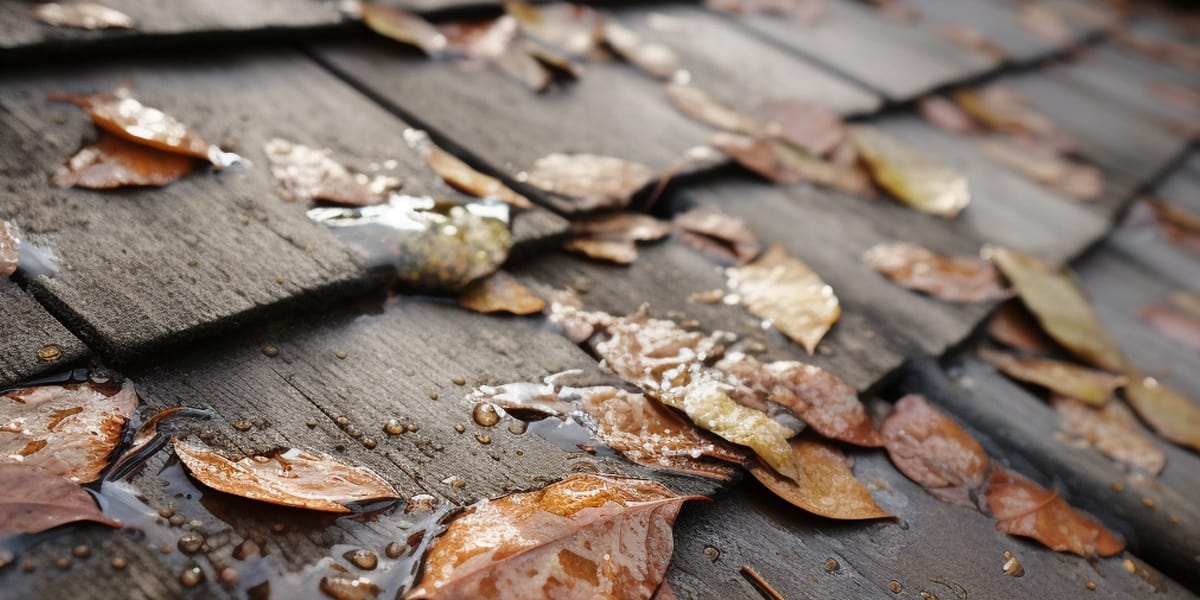Your roof is one of the most crucial components of your home’s structure, providing protection against the elements and ensuring your safety and comfort. However, like any other part of your house, it has a limited lifespan. Understanding the lifespan of your roof is essential for proper maintenance and timely replacement.
The durability of a roof depends on various factors such as material quality, installation techniques, climate conditions, and regular maintenance. By knowing how long your roof is expected to last, you can plan ahead for necessary repairs or replacements and avoid unexpected expenses.
Regular maintenance plays a vital role in extending the lifespan of your roof. Timely inspections and addressing minor issues can prevent major damage that could shorten its life expectancy. Additionally, understanding when it’s time for a roof replacement allows you to budget accordingly and avoid potential risks associated with an aging or deteriorating roof.
We will explore the key aspects related to roof lifespan, including factors that affect durability, signs indicating it’s time for replacement or repair, and essential maintenance practices to maximize its longevity. By gaining this knowledge, you will be equipped to make informed decisions regarding your roof’s care and ensure its optimal performance throughout its lifespan.
Factors Affecting the Longevity of a Roof
Materials
The longevity of a roof is influenced by several factors, including the type of roofing material used. In this section, we will explore different roofing materials and their lifespan to understand how they can affect the durability and longevity of a roof.
One commonly used roofing material is asphalt shingles. These are popular due to their affordability and ease of installation. On average, asphalt shingles have a lifespan of around 20 to 30 years. However, factors such as climate conditions and proper maintenance can impact their longevity.
Metal roofing is another option known for its durability. It can last anywhere from 40 to 70 years, depending on the type of metal used and the quality of installation. Metal roofs are resistant to fire, insects, rotting, and mildew, making them an attractive choice for homeowners seeking long-lasting protection.
Clay tiles are renowned for their aesthetic appeal and longevity. With proper care, clay tiles can last up to 50 years or more. They are resistant to fire and provide excellent insulation properties but may require additional structural support due to their weight.
Slate roofing offers exceptional durability with a lifespan that can exceed 100 years if properly maintained. This natural stone material is highly resistant to fire, rotting, insects, and extreme weather conditions. However, slate roofs tend to be more expensive than other options due to the specialized installation techniques required.
Wood shakes provide a unique look but require regular maintenance to ensure longevity. With proper care and periodic treatments against moisture damage and pests, wood shakes can last around 30 years or more.
Choosing the right roofing material plays a crucial role in determining the lifespan of your roof. Factors such as climate conditions, maintenance practices, quality of installation workmanship also contribute significantly in ensuring your roof’s longevity.
Climatic Conditions
The longevity of a roof is influenced by various factors, including weather patterns. Extreme weather conditions such as heatwaves, heavy rainfalls, snow accumulation, and strong winds can significantly impact the lifespan of a roof.
Extreme heat can cause shingles to deteriorate over time. The constant exposure to high temperatures can lead to cracking, warping, and loss of granules on the shingles. This can weaken the overall structure of the roof and reduce its lifespan.
Heavy rainfalls pose a threat to roofs as well. Excessive water accumulation can seep into cracks or gaps in the roofing materials, leading to leaks and water damage. Over time, this moisture intrusion can cause rotting of wood components and compromise the integrity of the roof.
Snow accumulation is another factor that affects roof longevity, particularly in areas with cold climates. The weight of accumulated snow on a roof can exert significant pressure on its structure. If not properly cleared or supported, this weight load can lead to sagging or even collapse.
Strong winds are notorious for causing damage to roofs. High wind speeds create uplift forces that can lift shingles or roofing materials from their positions. This exposes vulnerable areas of the roof and increases the risk of leaks and further damage during subsequent rainfalls or storms.
To ensure the longevity of a roof in various weather conditions, it is essential to choose durable roofing materials that are resistant to extreme temperatures and have adequate protection against moisture intrusion. Regular inspections and maintenance are also crucial for identifying any early signs of damage caused by weather patterns so that timely repairs or replacements can be made.
Maintenance and Care
Proper maintenance plays a crucial role in extending the lifespan of a roof. Regular roof inspections, gutter cleaning, and addressing leaks promptly are some of the factors that can significantly impact the longevity of a roof.
Regular roof inspections are essential to identify any potential issues or damage early on. By conducting routine inspections, homeowners or property owners can catch problems such as loose shingles, cracked tiles, or deteriorating flashing before they worsen and cause more extensive damage.
Gutter cleaning is another important aspect of roof maintenance. Clogged gutters can lead to water pooling on the roof, causing water damage and potential leaks. By regularly removing debris from gutters and ensuring proper drainage, homeowners can prevent water from seeping into the roofing materials and extend the lifespan of their roofs.
Addressing leaks promptly is crucial in preventing further damage to the roof structure. Even small leaks can lead to significant issues if left unattended for an extended period. Promptly repairing leaks helps maintain the integrity of the roofing system and prevents additional moisture-related problems such as mold growth or rotting wood.
Proper maintenance practices such as regular roof inspections, gutter cleaning, and addressing leaks promptly are vital factors in extending the longevity of a roof. By staying proactive with maintenance efforts, homeowners can protect their investment and ensure that their roofs remain in good condition for years to come.
Installation Quality
Proper installation plays a crucial role in determining the longevity and durability of a roof. When it comes to roofing, the quality of installation can significantly impact how well the roof withstands various factors such as weather conditions, wear and tear, and potential damage.
One key factor affecting the longevity of a roof is ensuring that it is installed correctly. This includes proper alignment and placement of roofing materials, secure fastening of shingles or tiles, and appropriate sealing to prevent water leakage. Improper installation can lead to issues such as leaks, premature aging, and even structural damage.
Additionally, proper installation techniques also take into account local building codes and regulations. Adhering to these guidelines ensures that the roof meets safety standards and withstands environmental challenges specific to the area.
Another important aspect of proper installation is selecting suitable roofing materials for the specific climate conditions. Different regions experience varying weather patterns such as heavy rain, snowfall, or high winds. Choosing materials that are designed to withstand these conditions will greatly enhance the durability of the roof over time.
Regular maintenance also plays a vital role in prolonging the lifespan of a roof. Inspections should be conducted periodically to identify any potential issues early on before they escalate into more significant problems. Prompt repairs or replacements can prevent further damage and extend the overall durability of the roof.
Proper installation techniques are essential for ensuring the longevity and durability of a roof. By following industry best practices, selecting appropriate materials for local climate conditions, and conducting regular maintenance checks, homeowners can maximize their investment in a long-lasting roofing system.
Roof Pitch and Design
The longevity of a roof is influenced by several factors, including the roof slope and architectural design. One key consideration is the choice between pitched roofs and flat roofs.
Pitched roofs, with their sloping design, are known for their ability to shed water and debris more effectively. This helps prevent water pooling and reduces the risk of leaks or structural damage. The steeper the pitch of the roof, the better its ability to shed water. Additionally, pitched roofs provide better ventilation, which can help prevent moisture buildup and prolong the life of roofing materials.
On the other hand, flat roofs have a horizontal or low-slope design. While they offer certain advantages such as easier access for maintenance and installation of equipment like HVAC units or solar panels, they are more prone to water pooling. Without proper drainage systems in place, flat roofs can experience water infiltration over time leading to leaks and potential damage.
Architectural design also plays a role in roof longevity. Factors such as overhangs, eaves, and gutters can influence how well a roof protects against weather elements like rain or snow. Adequate drainage systems are crucial for both pitched and flat roofs to ensure that water is directed away from the structure effectively.
It’s important to note that regular maintenance and inspections are essential regardless of the type of roof design chosen. Routine inspections can identify any potential issues early on before they escalate into costly repairs or premature replacement.
Both roof slope and architectural design significantly impact the longevity of a roof. Pitched roofs with steeper slopes tend to perform better in shedding water while providing better ventilation. Flat roofs offer certain advantages but require careful attention to drainage systems to prevent water pooling issues. Ultimately, proper maintenance practices combined with an appropriate choice of roofing materials will contribute to maximizing the lifespan of any type of roof structure.
Ventilation
Adequate ventilation plays a crucial role in preserving the longevity and integrity of a roof. It is often overlooked, but it is an essential factor that can significantly impact the lifespan of your roof.
Proper ventilation helps to regulate temperature and moisture levels in your attic. Without sufficient attic ventilation, heat and moisture can build up, leading to various problems that can compromise the structural integrity of your roof.
Excessive heat trapped in the attic can cause shingles to deteriorate more quickly, leading to premature aging and cracking. Moisture buildup can result in the growth of mold and mildew, which not only affects the health of your home but also weakens the roofing materials.
Additionally, poor ventilation can lead to ice dams during winter months. When warm air from inside your home rises into the attic and melts snow on the roof, it refreezes at the eaves where it is colder. This ice buildup prevents proper drainage and can cause water to seep under shingles, causing leaks and damage.
To ensure adequate ventilation for your roof, it is important to have a balanced system that allows for proper airflow. This typically involves having intake vents near the eaves or soffits and exhaust vents near or at the ridge of your roof.
Regular inspections by a professional roofer are recommended to assess if there are any issues with ventilation and make necessary adjustments or repairs. By prioritizing sufficient attic ventilation, you can help extend the lifespan of your roof and avoid costly repairs down the line.
Warning Signs: How to Determine When Your Roof’s Time is Up!
Recognizing the warning signs that indicate the need for a roof replacement is crucial in maintaining the structural integrity of your home. Neglecting these signs can lead to costly damages and potential safety hazards. In this section, we will explore some key indicators that will help you determine when it’s time to replace your roof.
One of the most obvious signs that your roof needs replacement is visible damage. This can include missing or broken shingles, curling or buckling shingles, or even bald spots where granules have worn off. These issues can compromise the waterproofing capabilities of your roof and leave it vulnerable to leaks and further damage.
Another warning sign is water stains on your ceiling or walls. If you notice any discoloration or water marks inside your home, it could be an indication of a leaky roof. It’s important not to ignore these signs as they can lead to mold growth and structural deterioration if left unaddressed.
Additionally, if you find excessive amounts of shingle granules in your gutters, it may be a sign that your roof is nearing the end of its lifespan. As asphalt shingles age, they tend to lose more granules, which can result in a compromised protective layer.
Other indicators include sagging or drooping areas on your roof deck, which may suggest underlying structural issues, as well as frequent repairs and patchwork over the years that no longer effectively solve the problem.
In conclusion, paying attention to these warning signs such as visible damage, water stains, excessive granule loss, sagging areas, and frequent repairs will help you determine when it’s time for a roof replacement. Regular inspections by professionals are also recommended to ensure early detection of any potential issues before they escalate into more significant problems.



